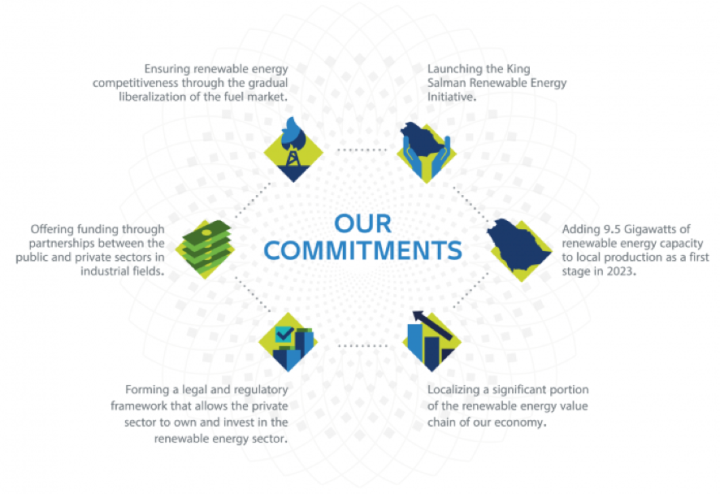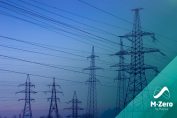
If the breakaway from oil is really started, as many have being predicting for years, it seems Saudi Arabia, does not want to be caught unprepared. The Saudi kingdom, always labeled as a country with an oil mono culture, enters the game by launching a package of reforms for the next 14 years. It is called Saudi Vision 2030, the plan that should aim at economic diversification so as to minimize the country’s dependence on oil. Details were presented last Monday by Crown Prince Mohammed bin Salman, during an appointment eagerly awaited by the international community.
The plan sets precise objectives for the next three decades. The economy of the Saudi kingdom which now depends for 80% on oil exports has been put to the test by the global crisis in crude prices, which caused a budget deficit of one hundred billion dollars in 2015 for the country, highlighting the urgent need for a change both at an economic and a social level. Although estimates speak of oil reserves for 270 billion barrels, the oil crisis has forced the government of the kingdom to cut subsidies and to stop many development projects, reducing its international standing and its ability to influence other Arab states.

Although the independence from black gold appears to be extremely complex and difficult to pursue, the young Saudi Prince, during the presentation speech of the Saudi Vision 2030, stressed its importance and feasibility which should already be achieved by 2020. According to him, this target could only be possible starting to invest immediately in alternative sectors that are expected to generate revenues of 100 billion dollars a year.
The presentation of Saudi Vision 2030, addressed four salient points, which are supposed to be converted into development projects in the coming years:
SAUDI ARAMCO
Determined that the value of Saudi Aramco is over $ 2 trillion, (unknown until now since it was a state secret), the giant oil company will be converted into a holding company and 5% will be put on the market, which it would turn to be the world’s greatest Initial Public Offering (see “Saudi Aramco: sleeping giant awakes“).
PUBLIC INVESTMENT FUND
The Public Investment Fund will undergo a restructuring and converted into a $ 2 trillion sovereign fund. The same Aramco will be one of the fund’s assets. Prince said the PIF in 2015 generated returns of 30 billion riyals ($ 8 billion) and that the aim would be to increase its equity to 7 thousand billion riyals from today’s 600 billion.
RENEWABLES AND MINING SECTOR
Saudi Arabia has decided to allocate along with other countries of the Persian Gulf investments to 116 billion dollars in renewable energies. Riad aims to double its renewable capacity by 2032, reaching 54 GWh, 41 of which coming from solar energy. An ambitious project that will let the Saudi monarchy aims to gain a dominant position in the green economy. Yet Riad was considered one of the actors defeated at the climate conference, Cop 21, held in Paris last December and concluded with a commitment to maintain the global temperature rise to below 2 degrees Celsius, and to make efforts to keep it within 1.5 degrees.
The fear of diplomatic isolation has prompted the Saudi government to announce a cut of 130 million tons of CO2 by 2030. An ambitious project, though still opaque in detail, but based on the conditional of maintaining “an economy that continues to diversify and grow”.
The plan also pursues the aim of increasing the contribution of the mining sector to the gross domestic product of 97 billion riyals ($ 25.9 billion) and raises the number of jobs in the sector to 90,000 in 2020. Saudi Arabia counts with mineral reserves that have nothing to envy to crude’s: gold, zinc, phosphate and 6% of the world’s uranium reserves, defined as “the new oil”.

SPENDING CUTS AND REFORMS FOR THE LABOUR MARKET
The Saudi government has also announced a series of spending cuts, as well as reforms aimed to reducing the budget deficit to about $ 87 billion by the end of this year, after the International Monetary Fund (IMF) has warned that the country could run out of cash in less than five years. At the moment 10% of the Saudi state budget, is used to cover subsidies and incentives for the Saudi citizens, a level of expenses which is no longer sustainable. According to Riad, cutting subsidies and public waste would allow savings of 30 billion dollars a year, while the introduction of VAT would ensure other 10. It is also being discussed the introduction of a tax on luxury goods and the removal of subsidies on petrol and light bills.
The decline in the Saudi unemployment rate from 11.7% currently to 7% is another of the goals of the reform plan. No doubt, it is a socio-political revolution in a country where two-thirds of the employed work for the state, 11.7% of the workforce is unemployed; millions of Saudis are under-employed (paid for doing nothing), and half the population – women – does not produce wealth. Although the news has been well received by the younger sections of the population, eager for a new era of social reforms that would lead to the re-conquest of civil rights, it seems not to be welcome by the powerful whabita clergy.
Too ambitious goals? Maybe… but if the largest oil producer in the world is evaluating a change of direction regarding its economy, perhaps the predictions of the modern Cassandras concerning the end of the oil era are not that wrong.
Maria Mura | Energy Consultant
If you found it interesting, please share it!
Recent Articles



































